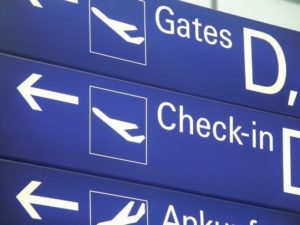
The Transportation Security Authority (TSA) has announced plans to increase the testing of biometric facial recognition systems at airport security checkpoints and baggage drops by its agents next year, as it evaluates the technology for a potential future deployment.
The aim of the program is to help TSA officers with the process of passenger and document authentication, most of which is currently done manually by agents.
“[TSA officers] would like technology to help them out and so what we’ve laid out are incremental improvements to automate this function for them and that’s what we’re really focused on,” said Melissa Conley, senior adviser for TSA’s Requirements and Capabilities office.
A recently completed pilot project at McCarren International Airport in Las Vegas had officers set up a camera for use with the agency’s credential authentication technology (CAT) by a TSA Travel Document Checker. The camera was used to photograph passengers who volunteered to be a part of the program, and then CAT was used to compare the captured image to the one on their travel documents.
The TSA plans to advance the CAT-C (CAT with Camera) biometric project with two future phases. The first phase, outlined above, was meant to ensure the technology works properly and to gather feedback from participating passengers on the graphic user interface (GUI) and their understanding and assessment of the technology.
The second phase, which the TSA hopes to launch in the second quarter of 2020, will involve the use of more flexible, modular and commercial off-the-shelf cameras, and any adjustments needed to the GUI based on the feedback gathered from phase one.
With the third phase, tentatively scheduled for the first quarter of 2021, the TSA aims to use the CAT-C technology to essentially create an automated “self-service gate”, where passengers can pass through without manual intervention from a TSA agent, with the system able to verify them and their documents automatically.
The TSA also has plans to leverage the data collected by the Customs and Border Protection (CBP) agency, which has been collecting the biometric facial data of foreign travellers entering and exiting the U.S., though U.S. citizens are not required to submit to facial recognition scans by CBP.
Biometric identification at airports is a rapidly growing trend around the world. In addition to the work being done by the TSA and CBP, many commercial airlines offer biometric check-in gates at multiple travel hubs, with United Airlines recently announcing their availability at every travel hub where they operate in the U.S.
Source: Defense Daily
–
December 9, 2019 – by Tony Bitzionis







Follow Us